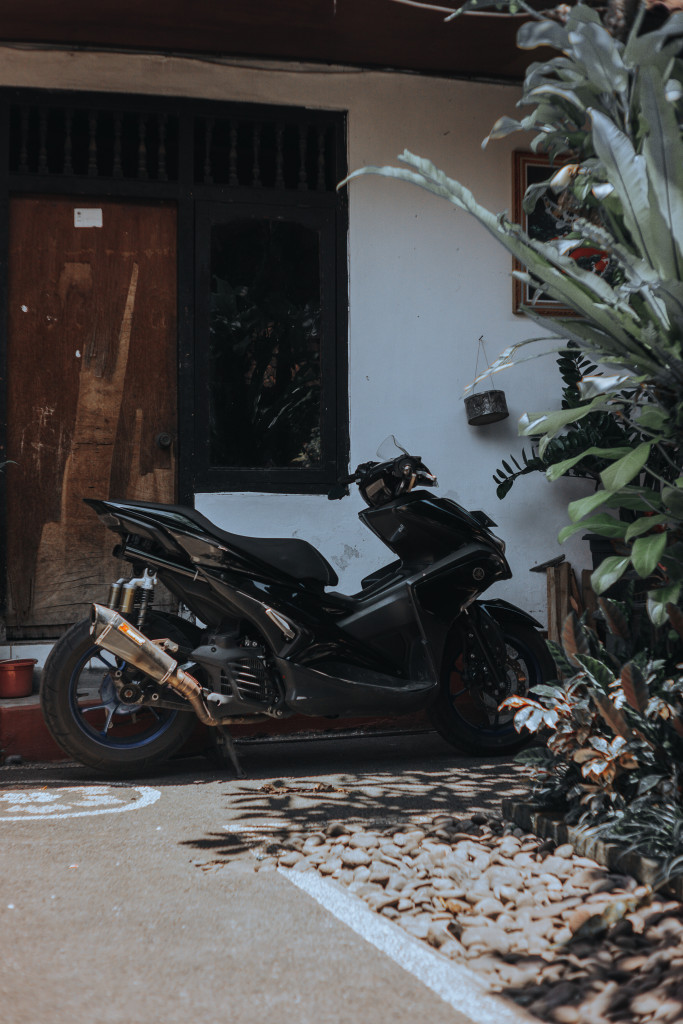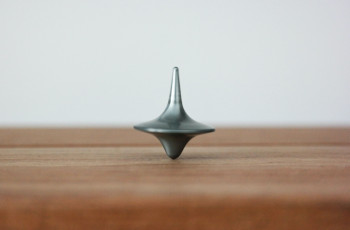Are you in need of a new bench grinder wheel but unsure where to start? Look no further! This article will serve as your comprehensive guide to selecting the right bench grinder wheel for your needs. Whether you’re a DIY enthusiast or a professional, we’ve got you covered with all the information you need to make an informed decision. From understanding the different types of bench grinder wheels to knowing how to choose the right grit for your specific task, this guide will help you navigate the often overwhelming world of bench grinder wheel selection. So, let’s get started and find the perfect wheel to help you achieve excellent results in your projects!
Types of Bench Grinder Wheels
Aluminum Oxide Wheels
Aluminum oxide wheels are the most commonly used type of bench grinder wheels. They are suitable for a wide range of grinding tasks and are versatile enough to handle various materials, including steel, wood, and non-ferrous metals. These wheels are durable and can withstand high temperatures, making them ideal for heavy-duty grinding applications. Aluminum oxide wheels are known for their excellent cutting ability and long lifespan.
Silicon Carbide Wheels
Silicon carbide wheels are another popular choice for bench grinder wheels. These wheels are especially effective for grinding materials that are hard and brittle, such as stone, concrete, and glass. They are also commonly used for sharpening tools and blades. Silicon carbide wheels are known for their fast and aggressive cutting action. They are typically used at lower speeds, as they can generate a lot of heat and may cause the material being ground to overheat and crack.
Zirconia Alumina Wheels
Zirconia alumina wheels are a premium type of bench grinder wheel that offers exceptional performance and durability. These wheels are made from a mixture of zirconium oxide and aluminum oxide, resulting in a wheel that is tough, sharp, and long-lasting. Zirconia alumina wheels are best suited for heavy-duty grinding tasks, such as removing large amounts of material or grinding hardened steel. They are known for their high stock removal rate and excellent cutting ability.
Types of Grinding Wheel Grits
Coarse Grits
Coarse grits refer to grinding wheels that have a lower number of grit particles per square inch. These wheels are suitable for rough grinding tasks where material needs to be quickly removed. Coarse grits are typically used for shaping and sharpening tools or removing heavy rust or paint. They can leave a rougher surface finish, but are ideal for initial grinding and material removal.
Medium Grits
Medium grits are the most commonly used type of grinding wheel grits. These wheels have a moderate number of grit particles per square inch and offer a good balance between material removal and surface finish. Medium grits are versatile and can be used for a wide range of grinding tasks, including general purpose grinding, shaping, and sharpening. They provide a relatively smooth surface finish and are suitable for most grinding applications.
Fine Grits
Fine grits refer to grinding wheels with a higher number of grit particles per square inch. These wheels are used for fine finishing tasks where a smooth and polished surface is desired. Fine grits are typically used for precision grinding, such as sharpening blades or polishing metals. They remove less material but provide a high-quality surface finish. Fine grits are also used for final touch-ups and achieving a polished look.

Factors to Consider in Wheel Selection
Material to be Ground
The first factor to consider when selecting a bench grinder wheel is the material you will be grinding. Different materials require different types of wheels to achieve the best results. For example, aluminum oxide wheels are ideal for grinding steel, while silicon carbide wheels are better suited for grinding stone or glass. It is important to choose a wheel that is compatible with the material to be ground to ensure efficient and effective grinding.
Grinding Application
The specific grinding application is another important factor to consider. Different applications require different wheel characteristics, such as aggressiveness, hardness, and grit size. For heavy material removal, a coarse grit wheel is recommended, while a fine grit wheel is more suitable for precision grinding or finishing tasks. Understanding the specific requirements of your grinding application will help you select the right wheel for the job.
Grinding Speed
The speed at which you will be grinding is another factor to consider. Bench grinders typically have two speed options: a lower speed for grinding and a higher speed for buffing and polishing. It is important to select a wheel that is compatible with the speed of your grinder. Using a wheel rated for a higher speed than your grinder can lead to wheel failure and potential safety hazards.
Wheel Hardness
The hardness of the bench grinder wheel is an important consideration when selecting a wheel. Wheel hardness is indicated by a letter (A to Z), with A being the softest and Z being the hardest. Softer wheels are more forgiving and are less likely to cause damage to the workpiece. Harder wheels, on the other hand, are more aggressive and remove material faster. It is important to strike a balance between wheel hardness and the material being ground to achieve optimal results.
Wheel Size
The size of the bench grinder wheel is determined by its diameter and thickness. The size of the wheel depends on the size of your grinder and the specific grinding application. Larger wheels are capable of grinding larger and thicker materials, while smaller wheels are ideal for precision grinding. It is important to choose a wheel size that is compatible with your grinder and suits your specific grinding needs.
Understanding the Wheel Markings
Wheel Material
The wheel material is indicated by a single letter code, such as A for aluminum oxide or C for silicon carbide. This code can usually be found on the side or center of the wheel. Understanding the wheel material is essential for selecting the right wheel for your grinding application. Different materials have different properties and are suitable for specific grinding tasks.
Wheel Grit
The wheel grit is indicated by a number, such as 24, 36, or 80. The higher the number, the finer the grit size. Wheel grit determines the coarseness or fineness of the abrasive particles on the surface of the wheel. Coarser grits are used for rough grinding and material removal, while finer grits are used for precision grinding and achieving a polished surface.
Wheel Bond
The wheel bond refers to the material that holds the abrasive grains together. It can be vitrified, resinoid, or rubber. Vitrified bonds are the most common and are made of ceramic materials that are fired at high temperatures. Resinoid bonds are made of synthetic resins and are more flexible, making them ideal for precision grinding. Rubber bonds are softer and provide a cushioning effect, making them suitable for grinding tasks that require low pressure.

Choosing the Right Wheel for Different Materials
Grinding Steel
When grinding steel, aluminum oxide wheels are the most commonly used. They are tough and can withstand the high heat generated during the grinding process. Coarse grit wheels are suitable for removing large amounts of material, while medium grit wheels provide a good balance between material removal and surface finish. When grinding hardened steel, zirconia alumina wheels are recommended for their exceptional cutting ability.
Grinding Aluminum
Grinding aluminum requires special care as it is a soft metal that is prone to clogging and galling. Silicon carbide wheels are commonly used for grinding aluminum due to their ability to prevent clogging and reduce heat buildup. Fine grit wheels are recommended for grinding aluminum to achieve a smooth and polished surface. It is important to use light pressure and frequent wheel dressings when grinding aluminum to prevent clogging and maintain wheel performance.
Grinding Wood
Grinding wood requires a different approach compared to grinding metals. Instead of using abrasive wheels, it is recommended to use wire wheels or nylon brush wheels for wood grinding. These wheels are less aggressive and are designed to remove small amounts of material without causing damage to the wood surface. Wire wheels are especially effective for removing paint, rust, and other surface contaminants from wood.
Safety Precautions when Selecting and Using Grinder Wheels
Inspecting the Wheel
Before using a bench grinder wheel, it is important to inspect it for any damage or defects. Check for cracks, chips, or uneven wear on the wheel surface. A damaged wheel can break during use, causing serious injury. If any damage is found, replace the wheel immediately.
Mounting the Wheel Properly
When installing a new wheel on your bench grinder, make sure it is mounted properly. Follow the manufacturer’s instructions for installation, ensuring that the wheel is securely tightened and aligned with the grinder’s spindle. A loose or misaligned wheel can cause vibration, which can lead to wheel failure and potential accidents.
Correct Operating Position
Maintain the correct operating position when using a bench grinder. Stand with your body positioned to the side of the wheel, not in front. This will protect you from any sparks or debris that may be thrown off during grinding. Avoid overreaching or leaning over the wheel, as this can increase the risk of accidents.
Using Personal Protective Equipment
Always wear appropriate personal protective equipment (PPE) when using a bench grinder. This includes safety glasses or a face shield to protect your eyes from flying debris, as well as gloves and a dust mask to protect your hands and respiratory system. PPE is essential for ensuring your safety while grinding.
Ensuring Grinder Stability
Ensure that your bench grinder is stable and securely mounted before use. The grinder should be placed on a sturdy workbench or mounted to a solid surface. Any vibration or movement can destabilize the grinder and increase the risk of accidents. Use clamps or other securing methods to keep the grinder in place during operation.

How to Install a New Bench Grinder Wheel
Preparation
Before installing a new bench grinder wheel, make sure the grinder is unplugged and turned off. Clear the work area of any debris or obstructions. Gather the necessary tools, including a wrench and any additional supplies recommended by the manufacturer.
Removing the Old Wheel
Loosen the nut or bolt that secures the old wheel to the grinder spindle. Use a wrench or the appropriate tool to remove the nut or bolt completely. Carefully remove the old wheel from the grinder, taking care not to damage the spindle or other components.
Installing the New Wheel
Place the new wheel onto the grinder spindle, aligning it with the mounting hole. Make sure the wheel is centered and sits flush against the wheel flanges. Hand tighten the nut or bolt onto the spindle, making sure it is snug. Use the wrench to further tighten the nut or bolt, ensuring that the wheel is securely mounted.
Maintaining and Extending the Life of Grinder Wheels
Cleaning the Wheel
Regularly clean the grinder wheel to remove debris and buildup that can affect its performance. Use a wire brush or wheel dresser to remove any accumulated metal particles, grinding dust, or residue. Proper cleaning will help maintain the wheel’s cutting ability and prevent wheel loading.
Dressing the Wheel
Periodically dressing the wheel will help restore its cutting ability and maintain its shape. Wheel dressing involves removing a small layer of abrasive material to expose fresh abrasive particles. Use a wheel dresser or diamond dresser to dress the wheel. Follow the manufacturer’s instructions for proper dressing techniques.
Balancing the Wheel
Imbalanced wheels can cause vibration and reduce grinding performance. To balance the wheel, use a wheel balancer or balancing arbor to identify any heavy spots on the wheel. Attach balancing weights to the wheel as needed to achieve balance. Balanced wheels provide smoother operation and reduce stress on the grinder’s motor and bearings.
Storing the Wheel Properly
When not in use, store the grinder wheel in a clean and dry environment. Avoid stacking or placing heavy objects on top of the wheel, as this can cause damage. Use protective covers or containers to prevent any dust, moisture, or debris from coming into contact with the wheel. Proper storage will help extend the wheel’s lifespan.
Common Grinding Wheel Issues and Solutions
Vibration and Noise
Excessive vibration and noise during grinding are common issues that can affect grinding performance and potentially damage the wheel. To reduce vibration and noise, ensure that the wheel is properly mounted and aligned. Check for any loose parts or components and tighten them as necessary. A well-balanced wheel and proper grinder stability can help minimize vibration and noise.
Uneven Wear
Uneven wear on the wheel surface can lead to poor grinding performance and affect the quality of the finished surface. To address uneven wear, regularly inspect the wheel for any signs of wear or damage. Rotate the wheel periodically to ensure even wear. If uneven wear is observed, consider dressing the wheel to restore its shape and even out the wear.
Wheel Loading
Wheel loading occurs when the wheel becomes clogged with material, reducing its cutting ability and causing grinding to become less effective. To prevent wheel loading, use a proper coolant or lubricant to cool the grinding process and flush away debris. Regularly clean the wheel to remove any accumulated debris or residue. Adjusting grinding parameters, such as speed or pressure, can also help reduce wheel loading.
Conclusion
Selecting the right bench grinder wheel is essential for achieving optimal grinding results. Understanding the different types of wheels, grits, and factors to consider will help you make an informed decision. By following proper safety precautions, maintaining and extending the life of your grinder wheels, and addressing common issues, you can ensure safe and efficient grinding operations. Remember to always consult the manufacturer’s guidelines and recommendations for your specific grinder and grinding application.



